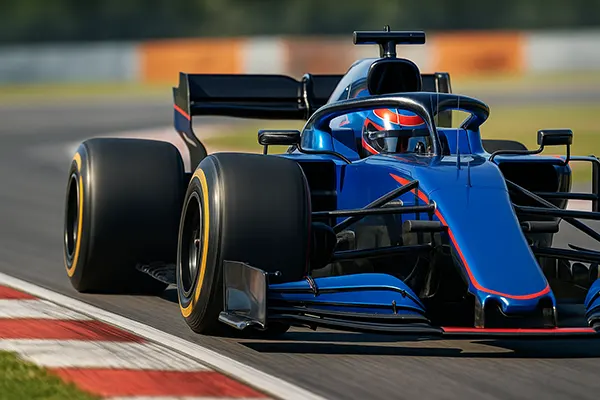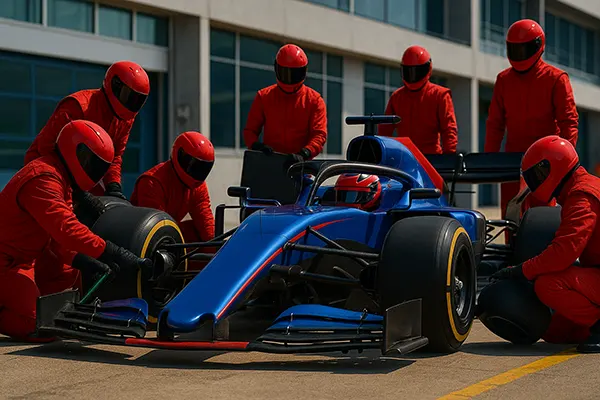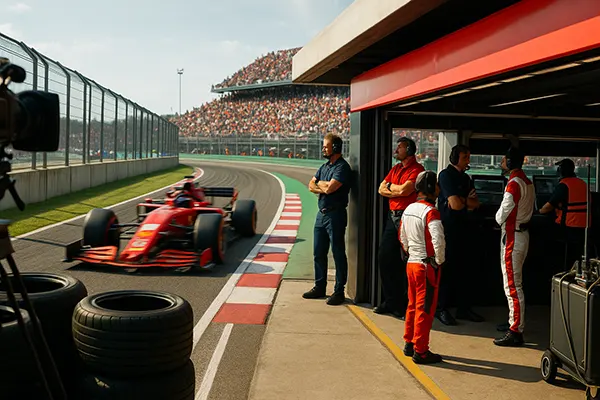Similar articles
Technology of Active Suspensions in Motorsport: A Return to Racing or a Permanent Ban?

Active suspension technology remains one of the most debated topics in motorsport history. Initially designed to enhance vehicle stability and optimise grip, it revolutionised racing in the late 1980s and early 1990s before being banned by regulatory bodies. In 2025, renewed interest in advanced vehicle dynamics and electric racing prompts a critical question — will active suspensions make a comeback, or are they destined to stay off the track forever?
The Rise of Active Suspension Systems in Racing
Active suspension systems were first introduced in Formula 1 by Lotus in the 1980s, aiming to control the car’s ride height and handling through computerised hydraulics. The technology allowed vehicles to maintain perfect tyre contact with the track, giving drivers unmatched stability during high-speed turns. This innovation significantly reduced aerodynamic drag, transforming racing performance standards.
By 1992, Williams F1 had perfected the concept with the FW14B, a car that dominated the championship due to its electronically managed suspension setup. The system’s ability to adapt instantly to changes in track surface made traditional mechanical setups obsolete. However, such superiority sparked controversy over whether engineering innovation was overshadowing driver skill.
In 1994, the FIA banned active suspensions, citing both safety and cost concerns. Teams were forced to revert to passive systems, marking the end of an era in which software-defined vehicle dynamics ruled the track. Despite the ban, engineers continued refining similar adaptive technologies for road and hybrid vehicles.
Technological Principles and Modern Adaptations
Active suspensions rely on sensors, actuators, and central processors that adjust the car’s ride height and damping in real time. Unlike passive systems, which depend on static spring and damper setups, active systems continuously calculate optimal suspension behaviour based on telemetry data such as G-forces, braking input, and wheel speed. This approach enables both performance gains and improved safety margins.
In 2025, electric and hybrid racing series like Formula E and endurance prototypes have begun exploring semi-active alternatives. These systems balance regulatory compliance with performance optimisation by integrating predictive algorithms rather than full automation. Such advancements showcase how racing can adopt AI-driven dynamics without compromising competitive fairness.
Modern vehicle manufacturers, including Mercedes-AMG and McLaren, have reintroduced adaptive damping technologies derived from their racing heritage. These innovations enhance comfort and control on public roads, blurring the line between motorsport engineering and consumer automotive design.
Why Active Suspension Was Banned — and the Ongoing Debate
The primary reason behind the FIA’s decision to ban active suspension lay in preserving the sport’s integrity. Racing was meant to highlight driver skill, not software precision. Moreover, the cost of implementing complex hydraulic systems was unsustainable for smaller teams, creating a technological arms race that risked widening the competitive gap.
Critics also argued that the systems made racing less unpredictable. Cars equipped with active suspension handled corners with mathematical precision, reducing the element of human adaptability. Yet, in modern motorsport, where telemetry and data analysis are integral, this argument seems increasingly outdated.
Recent advances in electric vehicle engineering have reignited discussions within FIA committees about revisiting the ban. Proponents believe that integrating controlled versions of active suspension could support safety innovations, particularly in adaptive stability management and tyre preservation strategies.
Environmental Efficiency and Technological Evolution
In 2025, the focus on sustainability and energy recovery systems has changed how motorsport views vehicle control technology. Active suspension can potentially reduce energy waste by minimising tyre slip and drag, indirectly lowering fuel or energy consumption per lap. This makes it compatible with the sport’s long-term decarbonisation goals.
From a manufacturing perspective, advances in lightweight hydraulics and electric actuators have reduced system complexity and energy demand. AI-assisted control systems can now learn from track conditions and adjust in milliseconds, providing both safety and performance benefits. These developments could redefine what “driver assistance” means in competitive racing.
However, regulatory approval remains uncertain. Any reintroduction would require clear guidelines to prevent over-automation and to preserve fairness. Motorsport authorities must balance innovation with tradition — a challenge that defines the essence of racing’s technological evolution.

The Future of Active Suspension in Motorsport
Looking ahead, active suspension may return under new names and forms. Adaptive ride control, AI suspension mapping, and predictive damping are already being tested in electric hypercars and endurance prototypes. The line between active and semi-active systems is gradually fading as software takes on a more significant role in performance tuning.
FIA’s current stance leans toward controlled integration rather than total prohibition. The governing body acknowledges that technological progress cannot be ignored but insists on transparency in implementation. Future frameworks might permit regulated versions of adaptive systems under strict cost caps and software oversight.
Ultimately, the question is not whether active suspension will return, but in what form. Motorsport remains a testing ground for innovation, and as long as engineers pursue efficiency and control, the spirit of active suspension — precision through intelligence — will never truly disappear from racing.
Relevance for the Automotive Industry in 2025
The ripple effect of motorsport technology continues to influence road cars. Active and semi-active suspensions are now standard in premium electric vehicles, offering adaptive comfort and safety advantages. Manufacturers utilise data from motorsport research to refine systems for everyday driving conditions, including variable road surfaces and autonomous driving interfaces.
In markets such as Europe and Japan, consumer expectations for intelligent chassis control have driven brands to adopt systems inspired by racing development. Tesla, BMW, and Porsche, among others, have integrated suspension AI capable of adjusting based on GPS data and driver profiles. This signifies a merging of motorsport heritage with digital mobility.
Therefore, while active suspension may remain partially restricted in professional racing, its principles are alive and evolving. It serves as a reminder that motorsport innovation extends beyond victory — shaping the future of global transportation and vehicle intelligence.


